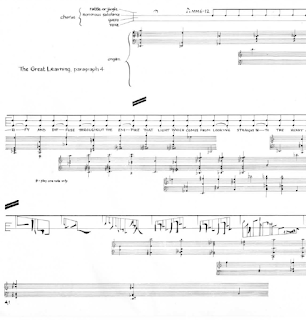Jürg Frey, Pianist, Alone (1+2)
Królikarnia. Muzeum rzeźby im. Xawerego Dunikowskiego
22/01/2017
19.00
Jürg Frey, Pianist, Alone (2)
Philip Thomas, fortepian
'30
23/01/2017
19.00
Jürg Frey, Pianist, Alone (1)
Philip Thomas, fortepian
'90
Muzyka Jürga Frey'a bywa zawstydzająco prosta. Nic w sobie nie ukrywa, nic czego nie moglibyśmy znaleźć na jej powierzchni, od razu; nie zakrywa sobą także niczego innego, żadnych odniesień ani nawiązań, które należałoby rozszyfrować; przeciwnie, jego muzyka raczej obnaża samą siebie, a właściwie jest obnażona od A do Z, w sposób nieustępliwy i równocześnie onieśmielający utrzymuje ten stan tak długo, jak długo sama trwa.
To w tym znaczeniu pojawia tytułowe „Alone”. Nie chodzi tu o żadną kompozytorską ekspresję. W obu utworach nie ma nic do interpretacji, nic do zgłębienia, jest tylko jasna sytuacja, której zakładnikami są w równej mierze wykonawca, publiczność co i sam kompozytor. Intymność owej samotności jest tak obiektywna jak to tylko możliwe. Król jest nagi – to fakt, który Frey z chęcią nam obwieszcza pozbywając się tym samym ostatnich okruchów pychy, zwykle zwanych technikami kompozytorskimi. Podobnie nagi jest wykonawca. Nie ma tutaj niczego za czym mógłby się skryć, żadnych wyrafinowanych harmonii, które mógłby pieczołowicie budować; nie ma żadnych sprytnych melodii, które mogłyby ukazać jego wirtuozerię, nie ma wreszcie żadnych eksperymentów ani rozszerzonych technik instrumentalnych, którymi mógłby zaimponować lub chociaż zadziwić słuchacza. Tym samym ten ostatni znaleźć się może w sytuacji najbardziej prymarnej z możliwych. Jak słucha? Czego chce? Jak długo? I oczywiście jest z tymi pytaniami, sam, zaraz obok pianisty. Nie ma w „Pianist, Alone” nic co ułatwiałoby odpowiedzi na te pytania, podobnie jak nie ma nic co pozwalałoby je schować. Jest tylko coś na kształt minimalnej muzyki fortepianowej, znaczenie bardziej minimalnej od minimalizmu i znacznie klarowniej konceptualnej od najbardziej dosłownych utworów Fluxusu.
Co zostaje po tak ekspansywnej ekstrakcji, czy może tak „bezwzględnej eliminacji”? Wraz z „Pianist, Alone (1)”, Frey wrócił w roku 2004 do fortepianu i jego pierwszych implikacji. Nie próbuje go postawić do góry nogami. Nie próbuje podważyć jego zachodniocentrycznej orientacji. Od tego czasu pisze swoją własną muzykę fortepianową, rozwijającą się powoli i niepozornie, a może rozwijającą się tylko pozornie. I raz na jakiś czas daje nam jej najprostsze kształty robiąc to ze spojrzeniem godnym człowieka wręczającego nam papierek lakmusowy.
Przy okazji wystawy „Retrospekcja” odbędziemy tylko część tej podróży, w którą zabiera nas Jürga Frey – oczywiście w kierunku odwrotnym do chronologicznego.


















